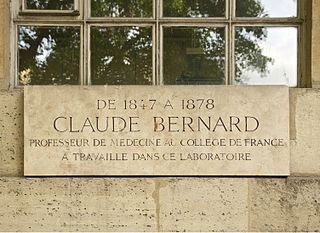Related Research Articles

The Royal Horticultural Society (RHS), founded in 1804 as the Horticultural Society of London, is the UK's leading gardening charity.

The National Trust is a heritage and nature conservation charity and membership organisation in England, Wales and Northern Ireland.

The National Trust for Scotland is a Scottish conservation organisation. It is the largest membership organisation in Scotland and describes itself as "the conservation charity that protects and promotes Scotland's natural and cultural heritage for present and future generations to enjoy".

English Heritage is a charity that manages over 400 historic monuments, buildings and places. These include prehistoric sites, medieval castles, Roman forts, and country houses.

A blue plaque is a permanent sign installed in a public place in the United Kingdom, and certain other countries and territories, to commemorate a link between that location and a famous person, event, or former building on the site, serving as a historical marker.

The Chelsea Physic Garden was established as the Apothecaries' Garden in London, England, in 1673 by the Worshipful Society of Apothecaries to grow plants to be used as medicines. This four acre physic garden, the term here referring to the science of healing, is among the oldest botanical gardens in Britain, after the University of Oxford Botanic Garden. Its rock garden is the oldest in Europe devoted to alpine plants and Mediterranean plants. The garden has high brick walls which trap heat, giving it a warm micro-climate, and it claims the largest fruiting olive tree in Britain and the world's northernmost grapefruit growing outdoors. Jealously guarded during the tenure of the Worshipful Society of Apothecaries, the garden became a registered charity in 1983 and was opened to the general public for the first time.

Waddesdon Manor is a country house in the village of Waddesdon, in Buckinghamshire, England. Owned by the National Trust and managed by the Rothschild Foundation, it is one of the National Trust's most visited properties, with over 463,000 visitors in 2019.

The Birmingham Botanical Gardens are a 15-acre (6-hectare) botanical garden situated in Edgbaston, Birmingham, England. The gardens are located 1+1⁄2 miles (2.4 km) south-west of Birmingham city centre at grid reference SP049854. Designed in 1829, the gardens are Grade II* listed in Historic Englands's Register of Parks and Gardens, and retain many original features and layout, which was designed by the landscape gardener and horticulturalist John Claudius Loudon. The site is notable for its range of glasshouses and gardens, which display a wide variety of plants and previously, birds. Birmingham Botanical Gardens is managed by Birmingham Botanical and Horticultural Society, a registered charity. The gardens are open daily to the public with paid admission.

The Horniman Museum and Gardens is a museum in Forest Hill, London, England. Commissioned in 1898, it opened in 1901 and was designed by Charles Harrison Townsend in the Modern Style. It has displays of anthropology, natural history and musical instruments, and is known for its large collection of taxidermied animals. The building is Grade II* listed.

Westonbirt, The National Arboretum is an arboretum in Gloucestershire, England, about 3 miles (5 km) southwest of the town of Tetbury. Managed by Forestry England, it is perhaps the most important and widely known arboretum in the United Kingdom.
Plant Heritage, formerly known as the National Council for the Conservation of Plants and Gardens (NCCPG), is a registered charity and a botanical conservation organisation in the United Kingdom. It was founded in 1978 to combine the talents of botanists, horticulturalists and conservationists with the dedication of keen amateur and professional gardeners. The mission statement of the organisation declares that "The NCCPG seeks to conserve, document, promote and make available Britain and Ireland's rich biodiversity of garden plants for the benefit of everyone through horticulture, education and science." Specifically, the aims of the organisation are to:

The City Botanic Gardens is a heritage-listed botanic garden on Alice Street, Brisbane City, City of Brisbane, Queensland, Australia. It was also known as Queen's Park. It is located on Gardens Point in the Brisbane CBD and is bordered by the Brisbane River, Alice Street, George Street, Parliament House and Queensland University of Technology's Gardens Point campus. It was established in 1825 as a farm for the Moreton Bay penal settlement.

A commemorative plaque, or simply plaque, or in other places referred to as a historical marker, historic marker, or historic plaque, is a plate of metal, ceramic, stone, wood, or other material, bearing text or an image in relief, or both, to commemorate one or more persons, an event, a former use of the place, or some other thing. Most such plaques are attached to a wall, stone, or other vertical surface.

Exbury Gardens is a 200-acre (81 ha) informal woodland garden in Hampshire, England with large collections of rhododendrons, azaleas and camellias, and is often considered the finest garden of its type in the United Kingdom. Exbury holds the national collection of Nyssa (Tupelo) and Oxydendrum under the National Plant Collection scheme run by the Plant Heritage charity. The gardens are rated Grade II* on the National Register of Historic Parks and Gardens.

Avenue House is a large Victorian mansion situated on East End Road in Finchley in the London Borough of Barnet.
Garden Organic, formerly known as the Henry Doubleday Research Association (HDRA), is a UK organic growing charity dedicated to researching and promoting organic gardening, farming and food. The charity maintains the Heritage Seed Library to preserve vegetable seeds from heritage cultivars and make them available to growers.

The Women's Library is England's main library and museum resource on women and the women's movement, concentrating on Britain in the 19th and 20th centuries. It has an institutional history as a coherent collection dating back to the mid-1920s, although its "core" collection dates from a library established by Ruth Cavendish Bentinck in 1909. Since 2013, the library has been in the custody of the London School of Economics and Political Science (LSE), which manages the collection as part of the British Library of Political and Economic Science in a dedicated area known as the Women's Library.

The Royal Parks make up land that was originally used for the recreation, mostly hunting, by the royal family. They are part of the hereditary possessions of The Crown, now managed by The Royal Parks, a charity which manages eight royal parks and certain other areas of parkland in London. The Royal Parks charity was created as a company limited by guarantee in March 2017 and officially launched in July 2017. Its chief executive is Andrew Scattergood.
Save Britain's Heritage is a British charity, created in 1975 by a group of journalists, historians, architects, and planners to campaign publicly for endangered historic buildings. It is also active on the broader issues of preservation policy. SAVE is a registered charity governed by a board of trustees.
Garden sharing or urban horticulture sharing is a local food and urban farming arrangement where a landowner allows a gardener access to land, typically a front or back yard, in order to grow food.
References
- 1 2 3 "What are the National Collections?". Plant Heritage. Retrieved 16 October 2023.
- ↑ "Plant Heritage, registered charity no. 1004009". Charity Commission for England and Wales.
- 1 2 Johnson, Rosamund; Gulliver, Simon (2002). "The National Plant Collection Scheme". Historic Gardens. Retrieved 16 October 2023.
- 1 2 "Start a National Plant Collection". Plant Heritage. Retrieved 16 October 2023.
- ↑ "Collection Holder's Handbook" (PDF). Plant Heritage. Retrieved 16 October 2023.